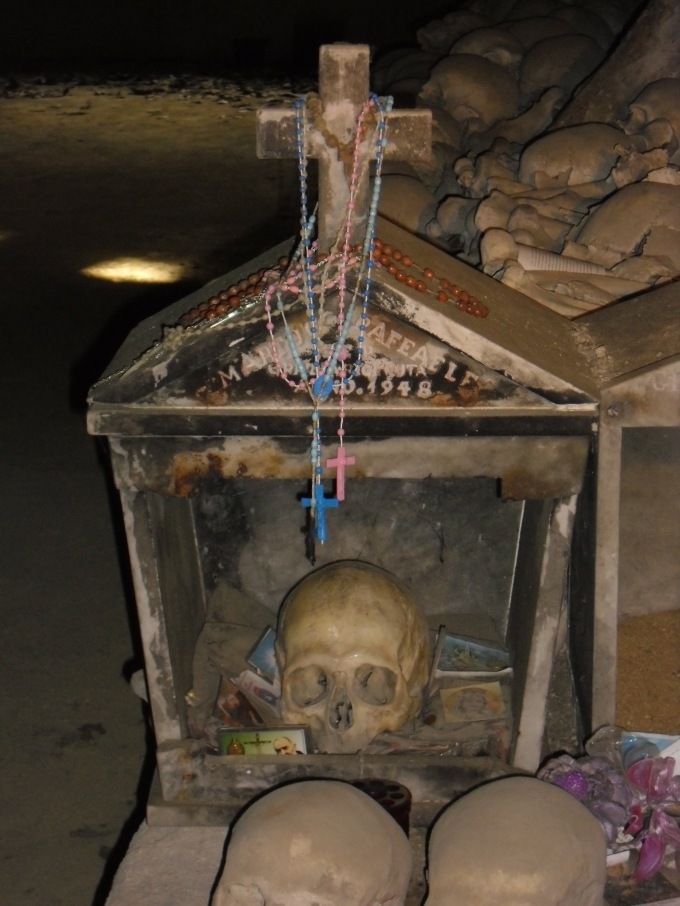
A fresco from the thermopolium of Lucius Vetutius Placidus in the city of Pompeii, depicting the spirit (genius) of the house central, flanked by Lares and Penates with Mercury on far left, Bacchus far right.
I love hearing from readers who have Italian roots and are interested in developing a personal ancestral veneration practice which reflects their cultural heritage. I’ve put together a list of advice I often give to these folks, in the hope that it may be of help to anyone on their journey.
I’ve laid this out roughly in a progression from simple workings intended to cool and strengthen the dead towards more complex workings which bring in entities that are not a part of the ancestral line, but whose Mysteries can be experienced with and through that line. However, please don’t feel like you need to work through this list in order. Allow dream and inspiration to inform you as much as text.
Above all else, go with your gut. You’re a part of this line. If something feels pleasant to you, it probably feels pleasant to them. And likewise if something feels unpleasant. Learning to pay attention to that gut feeling when you look at your ancestral altar lays the foundation for more advanced mediumship.
Don’t force it. Don’t go into the work with preconceived notions of what magical “results” should look like. Allow your personal lingua franca with the ancestors to develop organically. The effects of these practices are cumulative, so aim to do something small every day.
Look at the structure of your living family. During your childhood, did you spend more time with one side than the other? Did you have a particular affinity for one of your grandparents? These can offer clues as two which of your many lineages are most active right now in your lifetime.
Official Catholic devotions. These include paying for a Mass to be said for them, or doing indulgences for them on your own. The Raccolta is a good source for official prayers. Indulgences and Masses are especially important for the recently deceased.
If you only have the stomach for so much churchy business right now, I recommend you learn the Requiem Aeternam. It’s short, sweet, and carries an indulgence for the dead. It’s written in the singular, but you can swap for the bits in parenthesis to make it plural:
Requiem aeternam dona ei (eis), Domine, et lux perpetua luceat ei (eis). Requiescat (-ant) in pace. Amen.
If Latin isn’t your thing, here’s an English version:
Eternal rest grant unto him/her (them), O Lord, and let perpetual light shine upon him/her (them). May he/she (they) rest in peace. Amen.
Traditional folk offerings. These include candles (usually white wax in red glass) or olive oil lamps, water, fresh flowers, holy cards (santini), rosary beads.
Offerings from other traditions. Especially if you are interested in the ATRs, you may want to experiment with sharing a small portion of whatever you are eating, coffee, liquors, tobacco. Heavily perfumed waters, such as florida water and kananga water, are great to have on hand, either to add to glasses of cool water or to cleanse yourself with. When the dead are present, you may experience physical sensations, some of which can be uncomfortable. Perfumes like this can take the edge off of those feelings. If florida water and such are too strong for you, you can get rosewater (the type for cooking) from many Indian and Middle Eastern grocers and use it in much the same way.
Keep your home clean. In Naples, this practice is more commonly associated with ‘a bella ‘mbriana, the gecko-shaped house spirit, who is not explicitly related to the dead in modern thought. However, ‘a bella ‘mbriana may be an evolution of the ancient tradition of the Lares, who were both house spirits and ancestral spirits and were often depicted as snakes. You can play around with this imagery and see what speaks to you. Maybe find a toy gecko, or use statues of Saints Cosmas and Damien to represent the Lares, who were also depicted as twins.
Drink some amaro. Bitter herbs such as those used to produce amaro (which means “bitter”, after all) often have reputations for increasing psychic ability and contact with the dead.
If you like cannabis, smoke some cannabis. Less is usually more. In Santo Daime, a syncretic ayahuasca tradition, cannabis is called “Santa Maria” and syncretized with the Madonna. Working with Santa Maria is often said to result in contact with spirits of the dead.
Learn the comune (or comuni) that your family came from. It might have a website. At the very least, it should have a Wikipedia page, and the town’s patron saint(s) will be listed there. In some comuni the main festa is devoted to a different saint than the official patron. You may find that saint to be more accessible. Look for sections of text labeled “Tradizioni” (traditions).
If you don’t know the specific commune, look at the region they came from. What wine is made there? What bread to they bake there? Share some of that wine and bread with them. Remember: this is the body and blood of a god that they knew and worshipped which you are now consuming together. There’s a lot to unpack there. Don’t cut the bread with a knife; rip it up with your hands.
Look into saints and Madonne who specialize in matters of the dead. For example: San Nicola da Tolentino, Madonna del Carmine, Santa Rosalia, San Padre Pio, Santa Caterina da Genova. These can be appealed to for help deepening your personal connection, or settling restless spirits in your line.
If you have any other ideas or experiences you would like to share, please leave them in the comments!




